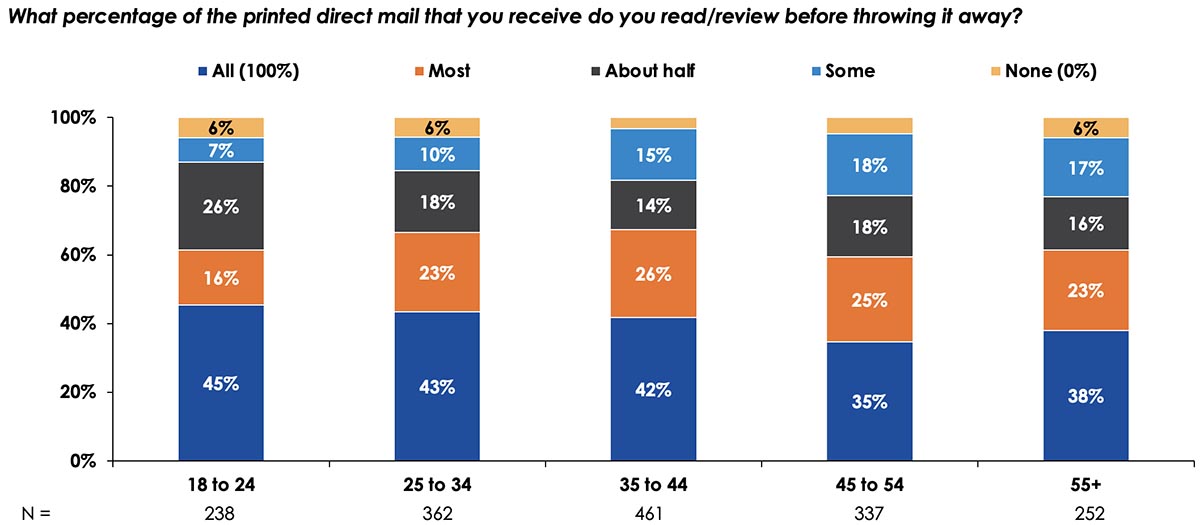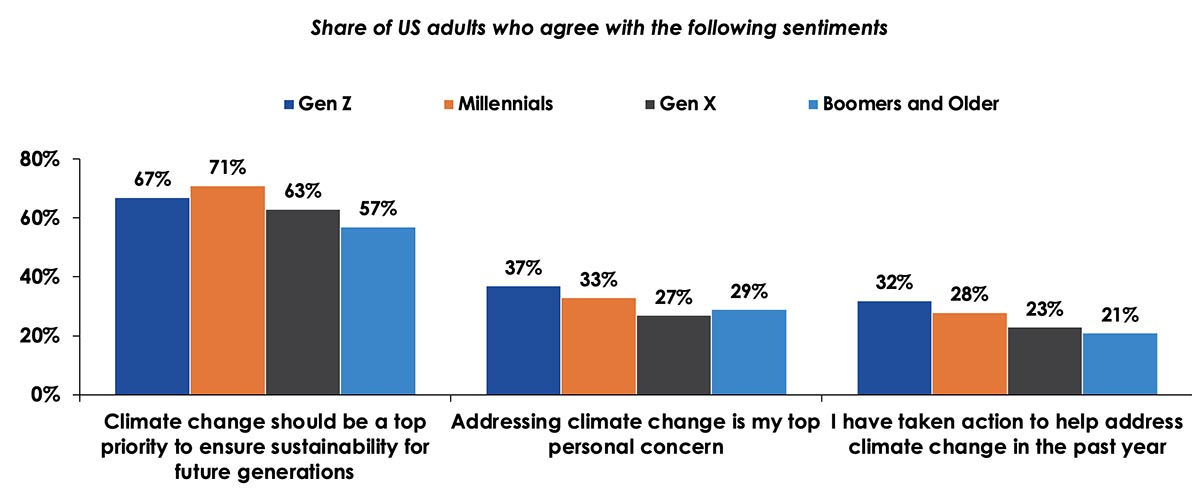- About 44% of consumers under the age of 35 read all of their direct mail communications before throwing them away.
- Some experts have already called Generation Z “the sustainability generation.” This focus on the environment will likely accelerate as the impacts of climate change become more pronounced.
- To capture the attention of younger consumers, marketers must understand what matters to them. Progressive ideals and community-driven initiatives should be key areas of focus.
By Colin McMahon
Introduction
One of the few certainties of life is that time always marches on. As is the case with many other industries, print encounters a new set of opportunities and challenges as each new generation comes of age. Today, the focus is Generation Z—individuals born between 1997 and 2012. Over the next several years, many more members of Gen Z will be graduating college, entering the workforce, driving the economy, and reshaping the world as they move through adulthood.
For a little more background, Gen Z has some key differences from Millennials. Gen Z was the first generation to grow up completely with the modern internet. The oldest Gen Z kids were 10 when the iPhone debuted, meaning most of them have never owned anything but a smartphone. These digital natives are inherently tech-savvy and tend to display a greater reliance on all things electronic. Those in the print industry might be concerned about how to reach Gen Z, but the future is not necessarily bleak. Recent research from Keypoint Intelligence shows that younger consumers still respond to relevant printed communications with the right messaging.
Gen Z Still Reads Direct Mail
Direct mail is a substantial avenue for printed communications. On average, the USPS delivers 173.1 million pieces of first class mail per day, and that’s just the first class mail. While some might assume that older generations are more responsive to direct mail, Keypoint Intelligence’s research suggests otherwise. In fact, those aged 18 to 24 (Gen Z) and those aged 25 to 34 (Millennials) were the most likely groups to read/review all (100%) of their printed direct mail.
Figure 1. Share of Direct Mail that is Read/Reviewed

Base: Total Consumer Respondents in the U.S. and Canada
Source: Annual State of Marketing Communications: Consumer Survey, Keypoint Intelligence 2020
Direct mail continues to enjoy high response rates—even among younger consumers—because it delivers a visceral, tangible punch that electronic communications simply can’t match. Paradoxically, because younger consumers grew up with digital, they are uniquely positioned to get excited about the personal touch that printed communications can offer. In an age of digital overload, print can stand out as the less cluttered channel. This is especially the case when the printed communication is personalized and highly relevant. Younger consumers are demanding to be seen and heard, and direct mail can enable marketers to connect with these consumers on a tangible, emotional level.
Of course, this certainly doesn’t mean that print should stand alone as a communication channel. No single communication channel can stand alone in an impactful marketing campaign. Going forward, the focus should not be on producing as much print as possible, but to make the most of the printed communications that are delivered. For example, color can be used to highlight important information, make calls to action more explicit, and reduce call center volume. Furthermore, direct mail can be used in conjunction with digital messaging to drive even more effective cross-media campaigns.
Print and the Environment
When approaching younger consumers, a focus on environmental sustainability is key. Generation Z has already been dubbed “the sustainability generation” by some experts, and this focus is only expected to grow as the effects of climate change become even more pronounced. According to the Pew Research Center, Gen Z and Millennials are more active in addressing climate change than older generations.
Figure 2. Views on Climate Change

Source: Gen Z, Millennials Stand Out for Climate Change Activism; Pew Research Center 2021
Chart Recreated by Keypoint Intelligence
This presents an opportunity for print to reinvent itself. Although materials like plastic have been framed as a negative force on the environment because of an incredibly long lifecycle before decomposition begins, print is easier to recycle and more biodegradable. Although print is not a perfect solution and should not be treated as such, print companies would do well to remind consumers of eco-friendly practices like reforestation initiatives and efforts to reduce carbon footprint. This messaging will likely appeal to environmentally-conscious younger consumers.
The Growing Desire for Morality and Compassion
When communicating with younger consumers, the message it delivers is often more important than the medium it arrives in. Business and politics are heavily entwined in the US landscape, so it’s more important than ever for businesses to have a purpose (other than making money, of course!). Marketers must look toward progressive ideals and community-driven initiatives to capture the attention and loyalty of younger consumers. In relation to their older counterparts, Gen Z and Millennials are more likely to support businesses that are actively trying to make the world a better place.
Although compassionate messaging can make an impact, it is equally important to remember that surface-level actions can backfire. Younger consumers are digital natives and very adept at internet research, so they won’t just take your claims at face value. Social media networks are rife with graphics and images exposing corporate hypocrisy. For example, companies that claim to be green while not supporting any eco-friendly initiatives might very well find themselves faced with boycotters rather than buyers.
The Bottom Line
Despite any preconceived notions, printed communications can be highly effective among younger consumers. In fact, because they are so saturated with digital messaging, younger consumers may be uniquely responsive to a tangible direct mail piece that delivers a human touch. Marketers that are hoping to make inroads with today’s younger generations need to be active in their communities, with a focus on the environment and working toward the greater good.
Colin McMahon is a Senior Editorial Analyst at Keypoint Intelligence. He supports most of Keypoint’s Production services with podcasts, blogs and other types of deliverables. A graduate of Concordia University, Mr. McMahon is a published author and an avid researcher. He enjoys working with the latest in imaging hardware.













